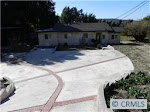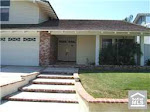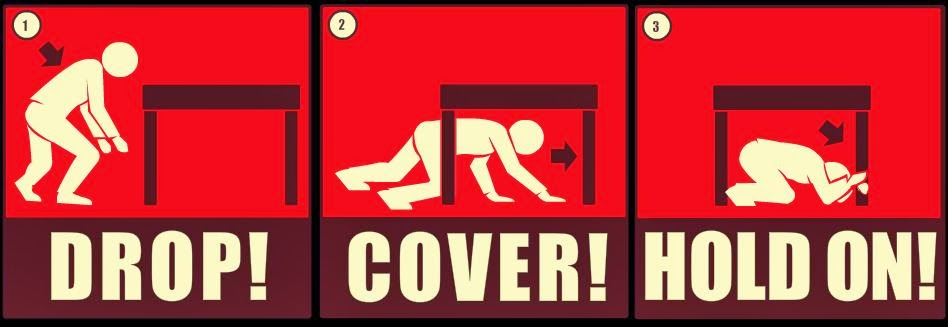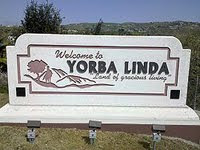/ The Orange County Register
Don't bother counting Beemers and Range Rovers. Don't even look for the priciest houses.
America's highest-income city is Yorba Linda.
So says the U.S. Census Bureau, which reported Tuesday that Yorba Linda had the highest median household income among more than 500 U.S. cities in 2006. Newport Beach, traditionally considered Orange County's wealthiest, ranked third. (See "Median Orange County household incomes, 2006" to see how other O.C. cities ranked)
By a narrower measure, median family income, Newport Beach ranked first at $147,697, followed by Yorba Linda and Newton, Mass. A household is one or more persons sharing a house or apartment. A family is two or more related persons.
Economists said the two cities' housing mix helps explain the finding.
While Newport Beach has many apartments, "Yorba Linda had the policy of not being friendly to townhomes and apartments," said Esmael Adibi, director of the A. Gary Anderson Center for Economic Research at Chapman University. "If you have lots of apartments and townhomes your median (income) is not going to be as high."
The numbers bear Adibi out. In 2000, the last year for which complete statistics are available, 44 percent of Newport Beach households were renters compared with 15 percent in Yorba Linda.
Since then, Yorba Linda has grown primarily through big-lot subdivisions - and that in turn has drawn families with big incomes.
"If you think about it, the new homes (in Yorba Linda) are a lot more expensive" than they once were, said Anil Puri, dean of business at Cal State Fullerton. "So there's a pre-selection of the kind of people who have moved there in the last five years."
You might call it quiet wealth.
"You go to Newport, and there's cars that cost $350,000 running up and down the streets," said Les Fujimoto, a Yorba Linda real estate agent. "You don't see that in Yorba Linda."
"Yorba Linda is mom and pop and apple pie," said Carole Geronsin, an agent with Prudential California Realty who sells homes there. "In general, most everybody there is unpretentious. They're not flashy. ... They're very fiscally conservative. You'll find wealthy people living in homes you'd be surprised they're living in because they don't believe in flash."
Mayor Allen Castellano said when the city invests in maintaining the infrastructure, it attracts residents with higher incomes to move into the community.
"People pay a little more for home here," Castellano said. "People have to have a little more money to enjoy a certain type of living."
The census reported median household income for all cities with a population of 65,000 or more. Yorba Linda was not included in previous years because it fell below that threshold until 2004 or 2005.
Wednesday, December 21, 2011
YORBA LINDA IS RICHEST U.S. CITY
Tuesday, November 29, 2011
91 WIDENING AIMS TO EASE O.C., I.E. COMMUTE
The $84 million project will add one general-purpose lane for six miles in each direction between the 55 and the 241.
By ALEJANDRA MOLINA / THE ORANGE COUNTY REGISTER
An upcoming 91 freeway widening project is expected to make life easier for Orange County and Inland Empire commuters.
The $84 million project – scheduled to begin construction the first of August – will add one general-purpose lane for six miles in each direction between the 55 and the 241. Crews will widen the bridge for Imperial Highway and the Weir Canyon Road undercrossing in both directions.
On Monday, transportation officials gathered outside the Orange County Transportation Authority's 91 Express Lanes offices – bordering the 91 – to break ground on the project that's expected to be completed by September 2012.
"It touches you in the heart when you get on this freeway at 5:30 or 6 o'clock in the morning and you see a line of lights going all the way out towards Riverside. ... Think of the folks living in our neighboring county coming to Orange County and work and sit in that traffic spending an hour, an hour and a half," said Anaheim Mayor Tom Tait at the ceremony.
"Bottom line of this project is ... it gets people home to their family sooner," Tait said.
Officials at the ceremony said this stretch of the freeway is not only one of the most important in Orange County, but it's considered one of the most congested in the nation.
This freeway is also thought as a lifeline for Orange and Riverside counties as it is the only corridor connecting the two counties.
Officials said this section of the 91 carries an average of up to 174,000 vehicles in the eastbound direction with about 160,000 vehicles that travel the westbound portion of that freeway.
By 2014, officials expect that traffic volumes will grow to an average of 158,000 to 190,000 daily.
Motorists feel the traffic congestion during the week in both the morning and afternoon peak periods, during the holidays and weekends.
"This freeway has linked the two counties for decades and while the congestion of the freeway has caused lots of frustration, this freeway has created all kinds of opportunities," said Karen Spiegel, a Corona councilwoman.
Spiegel said the 91 is not only crucial for Riverside County residents who commute from their home to their jobs in Irvine or Anaheim Hills but also allows them to keep in contact with their families in the O.C.
"When a family seeks to buy a larger home less expensive than Orange County, they come to Corona and the 91 freeway allows them to do so but still stay connected to family and friends in Orange County and LA County," Spiegel said.
Funds for the widening project come from the State Transportation Improvement Program and Proposition 1B – a bond approved by voters in November 2006. About $400,000 in funds are also provided by the renewed version of Measure M that voters approved in 2006.
By ALEJANDRA MOLINA / THE ORANGE COUNTY REGISTER
An upcoming 91 freeway widening project is expected to make life easier for Orange County and Inland Empire commuters.
The $84 million project – scheduled to begin construction the first of August – will add one general-purpose lane for six miles in each direction between the 55 and the 241. Crews will widen the bridge for Imperial Highway and the Weir Canyon Road undercrossing in both directions.
On Monday, transportation officials gathered outside the Orange County Transportation Authority's 91 Express Lanes offices – bordering the 91 – to break ground on the project that's expected to be completed by September 2012.
"It touches you in the heart when you get on this freeway at 5:30 or 6 o'clock in the morning and you see a line of lights going all the way out towards Riverside. ... Think of the folks living in our neighboring county coming to Orange County and work and sit in that traffic spending an hour, an hour and a half," said Anaheim Mayor Tom Tait at the ceremony.
"Bottom line of this project is ... it gets people home to their family sooner," Tait said.
Officials at the ceremony said this stretch of the freeway is not only one of the most important in Orange County, but it's considered one of the most congested in the nation.
This freeway is also thought as a lifeline for Orange and Riverside counties as it is the only corridor connecting the two counties.
Officials said this section of the 91 carries an average of up to 174,000 vehicles in the eastbound direction with about 160,000 vehicles that travel the westbound portion of that freeway.
By 2014, officials expect that traffic volumes will grow to an average of 158,000 to 190,000 daily.
Motorists feel the traffic congestion during the week in both the morning and afternoon peak periods, during the holidays and weekends.
"This freeway has linked the two counties for decades and while the congestion of the freeway has caused lots of frustration, this freeway has created all kinds of opportunities," said Karen Spiegel, a Corona councilwoman.
Spiegel said the 91 is not only crucial for Riverside County residents who commute from their home to their jobs in Irvine or Anaheim Hills but also allows them to keep in contact with their families in the O.C.
"When a family seeks to buy a larger home less expensive than Orange County, they come to Corona and the 91 freeway allows them to do so but still stay connected to family and friends in Orange County and LA County," Spiegel said.
Funds for the widening project come from the State Transportation Improvement Program and Proposition 1B – a bond approved by voters in November 2006. About $400,000 in funds are also provided by the renewed version of Measure M that voters approved in 2006.
Friday, November 18, 2011
The Allen Group is actively working to pass a law through congress to stop foreclosures. We are asking that you pass the word to everyone you know to help join this cause. Please visit www.TheAllenGroup.blogspot.com and register to be part of the petition.
Even if you are not facing foreclosure, this problem effects ALL OF US. As more and more foreclosures continue to pop up, the home prices in the neighborhood decline.
So, we are asking everyone to take a couple minutes and register on this blog
using the Contact button above.
Thank you for your support!
Even if you are not facing foreclosure, this problem effects ALL OF US. As more and more foreclosures continue to pop up, the home prices in the neighborhood decline.
So, we are asking everyone to take a couple minutes and register on this blog
using the Contact button above.
Thank you for your support!
Labels:
Sabrina Allen,
Short Sales,
Yorba Linda Real Estate
Thursday, November 17, 2011
HOMEOWNERSHIP: REPORTS OF ITS DEATH ARE EXAGGERATED
This headline was posted by the KCM Crew, authors of a blog for a real estate website called, "Keeping Current Matters." It's a great name for a blog, because in real estate, keeping current does indeed... matter. The above mentioned article randomly addresses the many negative articles regarding real estate, many of which have been published in local southern California papers. This newsletter, although not political, strongly disagrees with scare tactics and negative ploys designed solely to sell papers. After numerous recent articles all playing on the word, "scary", a pun on the Halloween holiday, let's level the playing field with some real numbers and let you, the discerning and intelligent reader, make up your own mind.
Local papers would have you believe that the sky is, in fact, falling; real estate will never recover and will never be the same. More on that later, with some real numbers that are a little sobering. But first, homeownership itself; is it dwindling? Is it, "on its way out?" Hardly. In fact, pick up a copy of the recently released Fannie Mae 2011 3rd quarter National Housing Survey. Both Generation Y (birthday mid-1970's to mid-1990's) and Generation X (mid-1960's to mid-1970's) have stronger beliefs in the importance of homeownership than those of the general population... yes that would be the boomers, and boomers have loved real estate. It seems clear that as the economy improves, so will housing demand.
Local papers would have you believe that the sky is, in fact, falling; real estate will never recover and will never be the same. More on that later, with some real numbers that are a little sobering. But first, homeownership itself; is it dwindling? Is it, "on its way out?" Hardly. In fact, pick up a copy of the recently released Fannie Mae 2011 3rd quarter National Housing Survey. Both Generation Y (birthday mid-1970's to mid-1990's) and Generation X (mid-1960's to mid-1970's) have stronger beliefs in the importance of homeownership than those of the general population... yes that would be the boomers, and boomers have loved real estate. It seems clear that as the economy improves, so will housing demand.
BUT DON'T BELIEVE THAT THERE IS NO DEMAND FOR HOUSING NOW
In fact, local associations of Realtors and Multiple Listing Data indicate that inventory is quite low. Part of the reason sales have slowed is there simply isn't enough saleable product out there. In this type of market, there will always be properties on the market that are technically available inventory, but simply have too many problems to overcome. They need a particular type of buyer. These properties can make it appear there is more inventory than is actually "saleable." Frankly, it is surprising that people who can buy, have chosen to back away from the market because of predictions of a triple dip. It's a "cost vs. buy" analysis. If you believe in home ownership, its tax deductions, its features of durability and stability for yourself and your family, then prices coupled with interest rates should make for a fairly attractive picture. Yes, prices could go down, but what it actually costs you, may never be better. Also loan programs could change and availability could change, since lending has been very volatile. But what won't change is the historic and undeniable return on investment that occurs in real estate every 10 years. Sometimes the cycle is shorter; sometimes the downturns (such as this one) are annoying. But check on a property, any property, and see what it sold for in 2000, and what its value is today, in the midst of our worst downturn. REMEMBER THE PROMISE OF MORE ON THE TOPIC, "REAL ESTATE WILL NEVER RECOVER?..."
REAL ESTATE AS A LONGER TERM INVESTMENT SINCE 2000
DOW +6.7% S&P -12% NASDAQ -30% REAL ESTATE +43%
DOW +6.7% S&P -12% NASDAQ -30% REAL ESTATE +43%
THE SHIP APPEARS TO BE TURNING, OR HOUSE PRICES TO FALL OVER NEXT SIX MONTHS
Well, both are true. October 31st, CNN Money reported: "Home prices headed for triple dip." Fiserv (a financial analytics company), has predicted a 3.6% fall in prices on a national basis by next summer. Now remember, southern California is a very different place than Las Vegas or Florida. But still, nationally it means that the Case-Shiller Home Price Index is going to fall to 35% below its peak in 2006. But what Ken Johnson, Ph.D. (Florida International University and Editor of the Journal of Housing Research) points out, is that the dip depends on circumstances being in place to lessen the impact that market anxiety causes. What circumstances? According to Johnson they are sometimes referred to as "housing affordability measures, and some of them are: 1) Price of income to the house 2) mortgage payment to income 3) buy versus rent analysis for various markets that encourage buying. Did you know that the payments to income ratios are at a 30-year low in all 50 states? Why haven't the local papers reported that? The downturn in prices will bring more affordability factors into play for more people, especially the Gen Xers and Gen Yers, which is where the pent up demand is going to come from in the first place.
Also of interest locally to southern California is the best prognosis for recovery you can have: skilled labor, desirable location, and economic resiliency.
Also of interest locally to southern California is the best prognosis for recovery you can have: skilled labor, desirable location, and economic resiliency.
Tuesday, October 4, 2011
CHILDREN OF FALLEN SOLDIERS NEED YOUR HELP
Friday, September 23, 2011
HOME SALES PERK UP & PRICES FALL...NOT AS MUCH AS YOU MIGHT THINK
Orange County home prices rose 9.5% in August (the latest full month available) and that's good news, no matter how the papers try to spoil it. The papers posted that prices dipped to their lowest in 5 months, but that is a misleading quote. Did prices go down? No. Did the median price go down? Yes. There is a difference. When you have nearly 400 more sales in one month, and the number of sales under $400,000 is nearly 4 to 1 to home sales over $700,000, your median price is going to fall. It does not mean that prices dipped nearly 5% as recent headlines read. In fact, even as prices fell in some areas by 1-3%, other prices rose depending on location, condition, and competition. Homes that are in prime condition and properly staged to represent a home a buyer could picture themselves living in, are likely to garner over list price, especially if they are equity sales. If the recent market has taught us nothing else, it is that buyers everywhere are tiring of the, "patience equity" achieved by hanging around for months during a short sale escrow. They can last 3 months to a year. Buyers are showing up in droves for properties that are in an equity position, prepared to pay a premium to be able to close in 30 to 45 days. Sellers that are in that position, may well be in the driver's seat, especially if the only competition in their neighborhood is distressed properties. The exact numbers will be featured in a later paragraph, but here are some big numbers for the state: there were 37,734 new and resale houses and condos sold statewide in August. The number of sales typically does increase from July to August, but to give it some context, the lowest July is 29,764 in 1992 and a high arrived in 2005 of 73,285. It is easy to see we're way above the low, but nowhere near the high. In fact the average is 48,344. We do have a ways to go, but for some who remember the sting only California really felt in the early 90's, it's not your imagination, it was worse then, than it is now.
WHAT WERE THE EXACT NUMBERS?
Orange County's total number of sales was 2,780. That was an increase of 13.2% over July and a 9.5% over August 2010. The median price declined 4%. There were 1,834 single-family resales, 793 condos, and 153 new homes. There were 1,264 sales under $400,000 and it plunged to 440 sales from $400,000 to $500,000. Prices from $500,000 to $600,000 dropped even further to 341. Just when you thought it couldn't go lower, $600,000 to $700,000 fell to 227 sales. Finally, over $700,000 came in at 478. There were 2,007 Notices of Default, and 1,466 Notices of Trustee Sale (the final step before foreclosure). There were 712 properties that actually went to Trustee Sale; of those 204 were purchased by investors, and 508 went back to the bank. Those 508 represent the next batch of REO or real estate owned, bank properties that will be hitting the market in future months. Now some good news: If it seems like all properties on the market these days are distressed, they truly aren't. For example, of the 1,871 single-family resale (discrepancy from above numbers is simply a different data provider), 1,271 were equity, only 300 were short sales and 280 were bank owned sales. In other words, 1,271 to 580. A whole lot more equity activity is going on than people think. And there is a better price point. Sellers who worry that they won't get as much value because of comparable sales dragging them down, median per square foot values were, $288, $252 and $237, respectively. We are not out of the woods, and no one is saying that we are, but, there are buyers, there are sellers, there are many people entering into real estate transactions, and it is possible to get a loan.
SPEAKING OF LOANS, THE LIMITS ARE GOING DOWN
The loan limits will be falling across the board regardless of county. However, it is important that you check with a lender to find out what the precise new limits are in your county. That being said, interest rates are so low, that even with an extra quarter of third of a percent increase, buyers should still be in pretty good shape. It is unclear at this moment whether or not Congress will raise the limits back up to their current levels. They did it once before, but the word on the street is, not this time. The limits roll back at the end of September.
FIRST GAIN IN GOLDEN STATE MILLION-DOLLAR HOME SALES SINCE '05
One interesting thing happened in 2010...the rise in million dollar sales. Last year saw 22,529 home sales over $1,000,000 in the Golden State of California, which was a 21% increase. Statewide, 463 homes sold for over $5,000,000 and the most expensive home sold, based on public records, was a 35,378 square foot, 15 bedroom, 7 bathroom, Bel Air property, which sold for $50,000,000. Of the million dollar buyers in 2010, 29% paid cash. Those that did choose to finance, the average down payment was nearly 40%. That makes sense, as most lenders are unlikely to give an interest only or 5% down payment. What that really gets back to is the buyer having some skin in the game. Sharing an equal amount of risk with their own money, and pledging to protect their investment by repaying the borrowed money. This is a concept that a lot of buyers across the country forgot, as everyone got caught up in free money fever. As we continue to right ourselves in our economy, these upper end buyers lead the way not only in equity gaining traction once again, but also in their confidence to buy the upper end product, of that most American made product... our homes.
Thursday, August 18, 2011
DO NUMBERS LIE? WHAT IS TRULY HAPPENING IN CALIFORNIA REAL ESTATE?
Everyone gets numbers to lie about something sometime. Are economists any different? Is the desire to get numbers to match their predictions so important as to exclude reality? The short answer... Maybe. Here are some interesting food stats for thought. All of the headlines have proclaimed a possible double dip. This column disagrees, and rather thinks we are bouncing along the bottom, represented by slight upticks in certain areas and size of homes and downticks in others. If you look at just closings, it would appear to be true. But if you take a look at pending activity, that is sales posted through the Multiple Listing Service and in the real estate offices, you would find that activity is about par with 2010. Steve Thomas, a real estate analyst, did precisely that. The number of new sales, according to Steve, declined by just 47 for the past month when compared with a year ago. In fact there were 3,060 pending homes this past month and 3,107 at this time a year ago, so demand was almost identical. So where does the Voodoo Math come from? The closings themselves. No one in real estate right now will argue the point of how incredibly difficult it is to close transactions. Title companies report healthy openings, given the market, in fact numbers month over month, all year, that are exceedingly close to those of 2010. And yet revenue, is low. Why? Two really good reasons; first of all, short sales can take 6 to 10 months to close. So even if your pending sales are at a solid number, the trickle-down effect takes a lot of momentum away. It is excruciatingly slow to close transactions for other reasons, such as the loan. Ask any lender, you can have a fully qualified buyer and the process is still long and arduous. Washington, in its infinite wisdom has placed all kinds of "safeguards" that do nothing more than muck the waters and make it virtually impossible for honest loan officers to do their jobs. Once again, it's too much, too late. The offending "lenders" responsible for the sub-prime meltdown, left the business 3 years ago. Now it is seriously hobbled, by Washington's bureaucracy. Don't believe it? Talk to any loan officer with any bank or mortgage company.
The other big fallacy? There are only distressed sales. Not true. Are their foreclosed properties being offered by the banks as REO listings (real estate owned)? Yes, of course. Are there short sales? Yes, of course. But not as many as the papers would have you think. See the next column for exact numbers. But there are an increasingly high number of "equity" or "full" sales. There are plenty of buyers who will pay a premium for the opportunity to buy a turnkey property with no deferred maintenance and no 6 to 10 month escrow, that needs bank approval. Another fallacy is that the REO comparables ruin it for the equity seller. Every area is different of course, but numbers show that for the most part, equity sellers maintain a much higher price per square foot than distressed properties. The point is, consult a Realtor. Talk to an expert. The papers want to sell papers. That's fine. But we the general public, owe it to ourselves to do our own investigating. Because, real estate is a great deal right now, prices are the lowest we may see in our lifetime, and interest rates are lower than they were in the 1950's and they won't stay low forever either. What is your situation? Only you know, but you owe it to yourself to check it out and not just from the papers.
The other big fallacy? There are only distressed sales. Not true. Are their foreclosed properties being offered by the banks as REO listings (real estate owned)? Yes, of course. Are there short sales? Yes, of course. But not as many as the papers would have you think. See the next column for exact numbers. But there are an increasingly high number of "equity" or "full" sales. There are plenty of buyers who will pay a premium for the opportunity to buy a turnkey property with no deferred maintenance and no 6 to 10 month escrow, that needs bank approval. Another fallacy is that the REO comparables ruin it for the equity seller. Every area is different of course, but numbers show that for the most part, equity sellers maintain a much higher price per square foot than distressed properties. The point is, consult a Realtor. Talk to an expert. The papers want to sell papers. That's fine. But we the general public, owe it to ourselves to do our own investigating. Because, real estate is a great deal right now, prices are the lowest we may see in our lifetime, and interest rates are lower than they were in the 1950's and they won't stay low forever either. What is your situation? Only you know, but you owe it to yourself to check it out and not just from the papers.
WHAT WERE THE EXACT NUMBERS?
All Southern California counties (Ventura, LA, OC, Riverside, San Bernardino, and San Diego) sold 18,394 homes in the month of May (the last complete month available). That was up 0.3% from April, but down 17.4% from a year ago. (closings, not pendings) The total number of sales for Orange County was 2,664 and that was off 5.6% from April and 18.2% from a year ago. Given those overall numbers, here are some worth noting: There were 1,230 full sales (equity), only 266 short sales, and only 248 bank owned closings. This is for single-family resale. Note how many more equity sales there were than distressed. Condos fared not as well; the ratios were closer to 50/50. There were 378 full sales, 198 short sales, and 194 REO or bank owned. Overall median price per square foot was $285 for full sales, $248 for short sales, and $241 for REO. There were 1,201 notices of default recorded, 1,720 notices of trustee sale recorded. The disparity in these numbers is mainly due to banks finally finishing the foreclosure process for many homes that have been in default, literally, for years.
There were 473 properties that went to foreclosure auction, that no one bought, and they became the latest crop of bank owned properties. However there were 222 properties that were purchased at auction by private parties. Again there was a large number of homes sold under $400,000 -- 1,155 to be exact. The opposite end, the number over $700,000 was 483. All other sales fell in between. (Source: Dataquick / Gregorich/ Public Records)
There were 473 properties that went to foreclosure auction, that no one bought, and they became the latest crop of bank owned properties. However there were 222 properties that were purchased at auction by private parties. Again there was a large number of homes sold under $400,000 -- 1,155 to be exact. The opposite end, the number over $700,000 was 483. All other sales fell in between. (Source: Dataquick / Gregorich/ Public Records)
EQUITY IS AN ISSUE FOR MOST HOMEOWNERS
Jonathan Lansner of the Orange County Register rightly reported that 1 in 6 homeowners in OC have no equity. Well, he got his info from CoreLogic, a real estate data and information services company. What they have is an estimate of 17.5% of homes are "upside down." This is based on calculations down payments and cash out refinances. Nationwide, it is estimated to be 22.7% that are upside down, so So Cal isn't looking so bad. Although there is no arguing that equity is in a tenuous position for many homeowners, this column does take issue with another headline in the Register that read, "Orange County housing still unaffordable." Really? You have nothing better to write than a pessimistic, misleading headline like that? If one went on to read the article, it stated that OC median housing prices were 2 and 1/2 times greater than the US median price. What a surprise. So we are pricier than Des Moines, Iowa, or Little Rock, Arkansas, or Topeka, Kansas or a myriad of small towns across America. Would it not have been more "Apples to Apples" to have compared affordability with other metropolis' such as San Francisco, Los Angeles, Boston, New York, or Miami. How do we fare then? Actually, OC has never been so affordable to so many since the early 1970's.
Wednesday, July 27, 2011
NEW BILL PREVENTS ALL LENDERS FROM PURSUING BORROWERS AFTER AN APPROVED SHORT SALE
Breaking news about short sales. Governor Jerry Brown has signed a new law that will have a profound effect on the short sale industry:
Previously, SB 931 and Civil Code 580e prevented first mortgage lenders from pursuing a seller for a deficiency after a short sale. However, holders of second or third mortgages could still pursue the seller.
However, Governor Jerry Brown just signed Senator Corbett’s bill 458 which states that once a short sale has been approved, ALL MORTGAGE DEBT IS FORGIVEN. This includes mortgages on primary residences, investment properties, second or third liens, etc. Once you get approval for a short sale, and once the short sale is complete, lenders can no longer pursue you for money that you previously owed them.
People who were hesitating to do short sales can now take a deep breath and sell their homes with no fear of deficiency after the fact. This bill goes into effect immediately. If you live in Orange, Yorba Linda, Villa Park, Placentia or any other North Orange County city, and you have questions about short sales, contact me immediately. I have facilitated many short sales transactions and would love to help you avoid foreclosure by doing a short sale instead.
Previously, SB 931 and Civil Code 580e prevented first mortgage lenders from pursuing a seller for a deficiency after a short sale. However, holders of second or third mortgages could still pursue the seller.
However, Governor Jerry Brown just signed Senator Corbett’s bill 458 which states that once a short sale has been approved, ALL MORTGAGE DEBT IS FORGIVEN. This includes mortgages on primary residences, investment properties, second or third liens, etc. Once you get approval for a short sale, and once the short sale is complete, lenders can no longer pursue you for money that you previously owed them.
People who were hesitating to do short sales can now take a deep breath and sell their homes with no fear of deficiency after the fact. This bill goes into effect immediately. If you live in Orange, Yorba Linda, Villa Park, Placentia or any other North Orange County city, and you have questions about short sales, contact me immediately. I have facilitated many short sales transactions and would love to help you avoid foreclosure by doing a short sale instead.
Labels:
Sabrina Allen,
Short Sales,
Yorba Linda Real Estate
Tuesday, June 21, 2011
HOMEBUILDING HIBERNATION ENDS
This was the headline of the Orange County Register on Sunday May 22nd. The entire real estate section was focused on all the housing developments that are picking up steam by most So Cal builders. The California division president of Fieldstone communities delivered the following quote, "It makes sense (to build) again. We can deliver a product where there's demand.” This column has been emphasizing for a few months, that the lapse in building over this fairly prolonged period of time, will result in heavy pressure on the resale market. That's good for homeowners who have hung in there, despite the odds, and have stayed current on payments and are riding out this temporary loss of equity. Why do I say temporary? Let's look at investments for the last ten years. There is not enough space here to do a comparison chart, but do your own. Take a look at the S & P 500, the Dow Jones, Nasdaq, and Real Estate. Let's see which one, held from 2000 to 2010 (the worst decade, all agree, in real estate) and see which investment fared best. The short cut answer: real estate. Also, with that investment, you managed to leverage your money and buy something somewhere between 10 X's and 5 X's your investment, depending on your down payment. You more than likely fixed your housing cost, unlike renting, and if you didn't use your home like an ATM, you have built equity. Let's not forget one of the best tax breaks for the middle class, interest deduction. Buying real estate doesn't sound so bad... No wonder they're building again. All agree building has been in the tank. This column has reported how low permits and percentages have been off. So after nearly 2 years of a blank in the building department, 28 developments have started the building process in one way or another. According to Irvine-based housing consultant John Burns, "builders are coming out of hibernation." The projects together include approximately 3,000 homes and townhouses and duplexes. Compare that to the paltry 1,600 of 2008-09. But catch up doesn't happen overnight. Short sales and foreclosures will continue to be a part of the market mix for several years to come, and certain buyers will be drawn to them for either "patience equity" or investors looking to rehab and sell. Equity, or standard sales, will continue to rule the qualified buyer who can afford to pay market rate for a turnkey property.
CALIFORNIA HOME SALES AND PRICES FALL IN APRIL, BUT BOUNCE UP IN MAY
There is no doubt in anyone's mind, who works in real estate full time, that 2011 has had an uneven edge to it. One month sales seem solid, the next, it sputters. The real culprit in this is not affordability; it's at an all time high. It's not selection, there is ample inventory, and it's not a lack of qualified buyers or motivated sellers. The real culprit is the impression that the media has given as to the availability of money. Many people think it's tighter than ever. Getting a loan is difficult. Actually, that's not true. So if you are a buyer who has been staying away because you think you can't get a loan unless you have a 740 FICO and 20% down, go start looking for your dream home, because that's not the truth. Do you have to be qualified? Yes. Do you have to have a job? Yes. Can you get a stated income loan? No. Can you get a fully documented FHA, VA, or Conventional loan? YES!!
ELIMINATION OF HOME INTEREST DEDUCTIONIS IN THE SIGHTS OF CONGRESS
If you care about your right to own property, if you believe in the last true deduction for the middle class that amounts to more than a hill of beans, this should be a cause you that catches your attention. Eliminating home interest deduction is definitely part of the deficit reduction conversation, and it shouldn't be. For those of us who are not wealthy, and cannot take part in the many loop holes that keep corporations and individuals from paying their fair share, this is our best deduction. Please contact your federal senators and congresspersons and make your voice heard. If we don't take a stand as homeowners, they will take it for us. Fight for your right to the American Dream and to an honest deduction that should be a matter of course.
U.S. ADDS 216,000 JOBS & U.S. LAYOFFS LOWEST SINCE 1995
These were a couple of very encouraging headlines starting out the second quarter of 2011. Not only were these figures higher than expected, but unemployment also dipped to its lowest level since 2008. In a recent article OC Register writer Jonathan Lansner had a similar headline, "Job Growth Could Cure Ailing Market." The gist of the article is really found in the Beacon Economics updated housing forecast for California. Research manager Jordan Levine finds some optimism that is driven by, "rising employment and incomes, which we project to grow by between 4% and 6% on the income side and 2% to 3% on the employment side." In other words, people really do need jobs to buy a house. And their income needs to be proportional to the price. Something the sub-prime and stated loan programs seemed to forget. The other encouraging things was that these jobs were "real" jobs; not seasonal, not minimum wage, but substantial jobs in technology, import, service, management, and manufacturing. Originally the Fed thought job recovery would be 5 complete years. Statistics now suggest that job recovery will happen by installment, both in types of jobs and location. Remember, it is projected (see last month for details) that California may be a little slower than some parts of the country, since we were hit so hard by the loan meltdown, but Southern California, specifically Orange County, was projected to emerge first.
Saturday, May 21, 2011
WINNER OF THE EASTER COLORING CONTEST
Congratulations to Kaitlyn Cantrall, the winner of our Easter Coloring Contest! Kaitlyn is 11 years old and lives with her mother and father in Yorba Linda. She received a gift card to Toys R Us and a 1st Place Blue Ribbon. Congratulations Kaitlyn and to all the participants!
Labels:
Sabrina Allen,
Tina Beene,
Yorba Linda Real Estate
Monday, April 4, 2011
WHAT WERE THE ACTUAL NUMBERS
The total number of sales for Orange County in November (the most recent complete month available) was, 2,257, which was down 1.8% from October. That is a reasonable, seasonal, decline. It was also down 10.7% from November 2009, which seems like a lot, but if you look at the year-to-date average number of sales of 2,545, there is only a -0.7% differential. There were 1,407 single-family resale, 614 condos, and 236 new homes. The last statistic on new homes is worth mentioning because it is a 27.6% increase. Why does this matter? Building demand leads to building permits, leads to hiring in construction, the one job sector that is most sluggish in So Cal. In other words, demand for new homes is a sign of recovery. The lead price range is still the entry level under $400,000, which had 938 sales. The slowest price range was from $600,000 to $700,000 with only 196 sales. The reason for this may be as simple as there is a shortage of properties in that price range because the over $700,000 bracket was fairly healthy with 438 sales. Notices of Default were up slightly (4.5%) over October, but still down 16.1% from November '09. Foreclosures are way down, but this is a goofy number as banks have made it clear they have stalled the process on many of their distressed properties. The number of distressed properties on the market (short sale, or bank owned) remains steady at approximately 39%, which is lower than the peak of the recession, when that number was as high as 56%.
Labels:
Sabrina Allen,
Tina Beene,
Yorba Linda Real Estate
DEMAND FOR HOMES DROPS 12%...PENDING HOME SALES UP?...WHO DO YOU BELIEVE?
There was an article written by the OC Register's Jonathan Lansner that was rather pessimistic, citing that a report by Steve Thomas at Altera Real Estate, as of December 9th said, "After remaining the same for the better part of a month, demand dropped by 12% (in the past two weeks)." My problem with this article was the headline. If you read on in the quote by Steve Thomas, himself a real estate broker, the statement clarifies itself, "For the remainder of the year and the first few weeks of the New Year, demand will continue to drop. This is cyclically the slowest time of the year for Orange County real estate." The headline leads you to believe that real estate is once again plunging, that things may become dire once again. The actual article is merely talking about a cyclical moment in the market, that is experienced every year in varying degrees. Two weeks later on December 31st, The National Association of Realtors reported that, "the number of people who signed contracts to buy homes rose in November, the fourth increase since contract signings hit a low in June. " In fact, its index of sales agreements for previously occupied homes increased 3.5%. So, who do you believe? The NAR would obviously know the number of contracts being signed and that would seem to be a worthy statistic. No one is saying the market is healthy. But demand plunging? It would not seem to be the case.
Labels:
Sabrina Allen,
Tina Beene,
Yorba Linda Real Estate
ACCORDING TO 3 REPORTS, IT MAY JUST BE BETTER IN 2011
At the end of 2010, already becoming a distant memory, were some confounding signs in the economy. As the holidays continued, retail and durable spending was up, but how could that be in our sputtering economy? Although the recession had supposedly officially ended, most economists agreed that recovery would be very sluggish until 2012. At the heart of that disposition was the issue of jobs. Where were the jobs? Well, out on December 31st were the three reports by Chapman University, Cal State Fullerton, and UCLA, weighing in on jobs, unemployment, income growth, building permits, US GDP, and 10-year treasury. All reports on all fronts were positive, with the most anemic growth coming in the builder sector, with very slight growth on building permits. All three see job growth between 18,000 and 24,000 but with most improvement coming in the second half of the year. They all see unemployment plunging below that 9% mark that has plagued any serious recovery. Income growth will rise between 3.6% and 4.8%. UCLA's report had an interesting comment, "Accelerating economic conditions should be observed by mid-2011 as consumers increase their spending to reload on worn-out durable goods and businesses hire more workers to meet rising demand for goods and services. The outlook for an expansion of the workforce shows momentum building into 2012. While the public sector remains weak, the private sector will do all the heavy lifting regarding 2011." The gist would seem to be, expect gradual improvement, and yes, the recovery has really begun this time. How does all this effect real estate?
Labels:
Sabrina Allen,
Tina Beene,
Yorba Linda Real Estate
Subscribe to:
Posts (Atom)



























